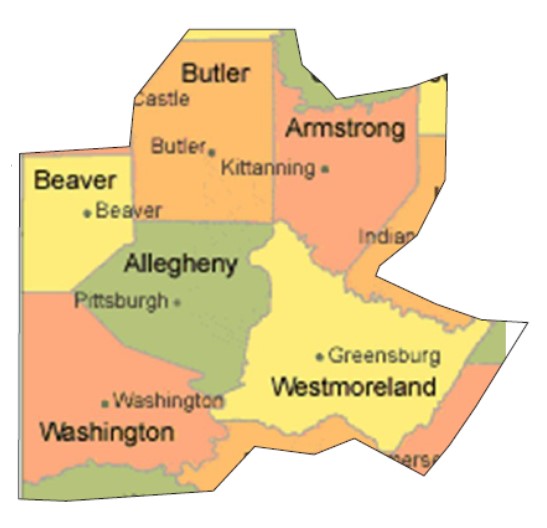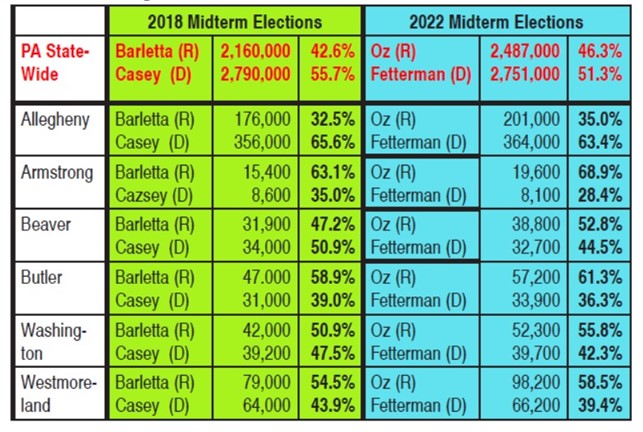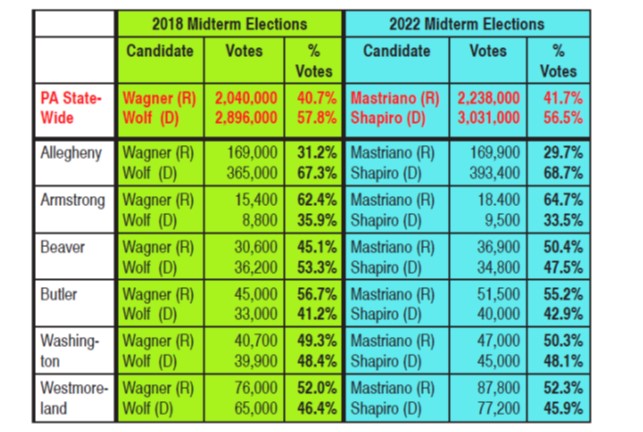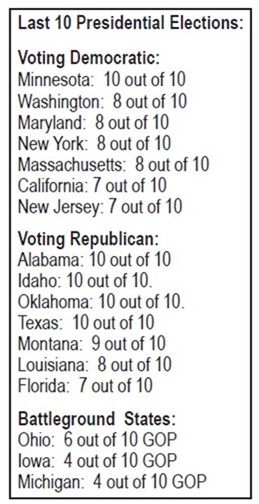By Kollengode S Venkataraman
There is widespread belief that American voters judiciously elect their leaders after evaluating their candidates and the issues they confront in national elections. This is because globally, the United States’ history in electoral politics has gained mythical dimensions, eventually getting into high school textbooks in many parts of the world. However, we can make a case that American voters in the aggregate are not that discerning in electing their leaders. This is despite our long traditions in grass roots democracy since the days when the Pilgrims arrived in Massachusetts on the Mayflower in the 17th century. Our voters seem to follow their past voting patterns based on their beliefs, ideologies, deeply held anxieties towards change, even prejudices.
A more troubling pattern in the US is the sharp differences in the voting patterns among the urban, suburban, and rural populations. These groups live in silos, with little efforts to understand each other’s hopes, priorities, and anxieties. Worse still, they live with mutual disdain and condescension towards each other despite all the wonders of instantaneous communication and affordable gadgets for disseminating information. One can even make a case that the silos mentality is because of the instantaneous and affordable access to information, with well-funded campaigns that only reinforce people’s beliefs and prejudices.
This situation makes it difficult for building consensus to bring about changes with minimum discord. This is becoming a global trend in developing and less developed economies with ominous consequences.
In the 2022 midterm elections in Pennsylvania, we had “open seats” for the US senate and governorship, with the none of the GOP and Democratic candidates having the benefit of incumbency. For the US Senate, the candidates were Mehmet Oz (R) and John Fetterman (D); and for the governorship, Doug Mastriano (R) and Josh Shapiro (D).
Even though the seats were “open,” candidates Mastriano, Fetterman and Shapiro were not new to electoral politics in the state. Fetterman was the elected lieutenant governor for the retiring governor Tom Wolf, and Shapiro was the elected Attorney General, both having won in state-wide elections. While Fetterman and Oz won in the party primaries early in 2022, Shapiro was unopposed in the primary.
Mastriano too was not new to electoral politics: he is the state senator in Harrisburg for District 33 comprising Franklin and Adams counties, part of what is known as “the Dutch Country.” He won in the party primary for the governor’s office. Mastriano is a US army veteran (30 years), retired as a colonel after serving in Europe during the Cold War, and in the wars in Kuwait, Iraq, and Afghanistan.
The GOP US Senate candidate Mehmet Oz, a New Jersey native and a retired cardiothoracic surgeon, was a TV personality promoting health fashions in Oprah Winfrey’s morning shows. Oz was new to electoral politics—not having contested even in school board elections—and an “outsider” in Pennsylvania. But Oz had the backing of President Trump.
These “open seat” situations gave an opportunity to study the voting patterns in the “urban” Allegheny County (with Pittsburgh at the center) vis-a-vis the five surrounding suburban counties. See the picture below.
Fetterman (D) was a “local” candidate with an unusual background. He was born in southeast Pennsylvania to parents who were nineteen years old at the time of his birth. He was raised in affluent suburban York, PA and his parents were Republicans.
While Fetterman was studying at the University of Connecticut for his MBA, his best friend died in a car accident that deeply affected him. Later, Fetterman joined the NGO Big Brothers Big Sisters of America, pairing with an eight-year-old boy in Connecticut whose parents both died of AIDS. He worked for two years in Pittsburgh in risk management as an underwriter. In 1995, he joined the AmeriCorps, and was sent to teach Pittsburgh adults pursuing their GEDs, giving a second chance to people who did not complete high school. He later went to Harvard’s Kennedy School graduating in 1999 with a master’s degree in Public Policy. (Source: Wikipedia)
Fetterman is known in our region as the Mayor of Braddock between 2006 and 2019, a rundown municipality in the Mon Valley (once a thriving place in the heydays of Mighty Steel decades ago), now known for poverty, violence, and crime. His work in Braddock gave him national recognition.
With this background, Fetterman was seen by many as a shoo-in candidate for voters in our region, given that his opponent Mehmet Oz, a multimillionaire TV doctor was seen as a carpetbagger from New Jersey.
Oz, the son of Turkish immigrants, raised in Wilmington, Delaware, is a dual citizen of the US and Turkey. He went to Harvard University (biology undergraduate), and later to the University of Pennsylvania (medicine and MBA degrees). In 2001, he became a professor of surgery at Columbia University and was a well-recognized cardiothoracic surgeon. In the early 2000s, Oz was a regular guest on The Oprah Winfrey Show. In 2009, he started his own The Dr.Oz Show, a daily television program on health and medicine, running for thirteen seasons. Oz dabbled in alternative medicine, faith healing, and various paranormal beliefs that earned him criticism from a number of medical publications and physicians (Source: Wikipedia).
Given this contrast between Fetterman (D) and Oz (R) as candidates for the US Senate, I too expected that Fetterman would have no problem harvesting votes from our region of the six counties, namely the urban Allegheny County and the surrounding five suburban counties. But an analysis of the votes polled in the elections revealed something quite different and significant in US electoral politics. The voter data extracted for this story is from www.electionreturns.pa.gov/#
Historically in US elections, there are significant differences in the voter turnout between the quadrennial presidential elections and the biennial midterm elections. Therefore, comparing the voter data in the presidential elections with those in the midterm elections may muddy the analysis. Therefore, the results of the midterm 2022 are compared with those of the midterm 2018 elections. The table below shows the results of the 2018 and 2022 midterm elections.
In the 2018 midterm elections for the US Senate, Bob Casey (D), the incumbent US Senator, ran against congressman Lou Barletta (R), the GOP candidate for the US senate. Barletta too, like Oz, had the former President Trump’s endorsement.
On the statewide votes count (red letters at the top of the table), in the 2018 midterm elections, the Democratic incumbent Casey with 56% of the votes defeated Barletta who got 43% of the votes. In the 2022 election, the Democrat Fetterman, the PA native son, could defeated the outsider Republican Oz only with a narrower margin of 51% vs Oz’s 46%.
Incidentally, after nearly 80 years, Pennsylvania now has both US senators from the Democratic Party. The last time this happened was in the 1940s. In that sense, there is a big palpable change on the electoral politics in our state, partly attributable to the redistric https://www.msn.com/en-us/feed ting of electoral maps.
When we drilled down the voter data for the counties in our region, the numbers are quite revealing. Historically, the highly urban Allegheny County, as urban counties everywhere in the US, has always been heavily Democratic.
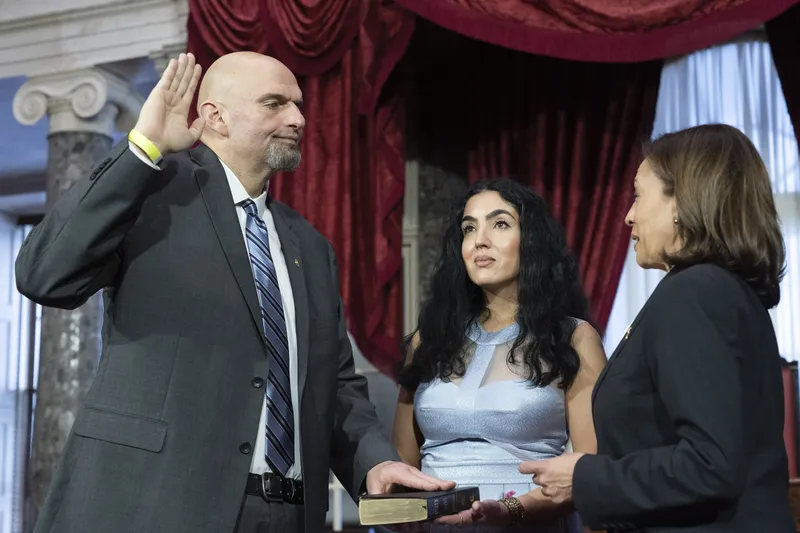
Therefore, in the 2018 Midterm (green part of the Table), in Allegheny County, the vote split between Casey and Barletta was 66/33. For Fetterman in 2022, the vote split against Oz was narrower, namely, 63/35. It is noteworthy that even though Fetterman is from our region with an impressive record, he got only 63% of votes in Allegheny County against OZ, an outsider from New Jersey, lower than Casey’s 66% of votes against Barletta.
Again, historically, all counties surrounding Allegheny County have always been consistently Republican, some more, some less. This is a common trend between the urban and the surrounding suburban counties in all fifty states in the US. Compared to the 2018 midterm, in the 2022 midterm elections, all the surrounding counties voted even more heavily Republican. See below:
2018 Midterm 2022 Midterm
Armstrong County: 63% GOP 69% GOP
Beaver County: 47% GOP 53% GOP
Washington County: 51% GOP 56% GOP
Westmoreland County: 55% GOP 59% GOP
Fetterman, a Harvard MBA, is a “native” local candidate heavily invested in the region, with an impressive track record, serving as mayor in one of the most depressed municipalities in our area. Even with such a record as Fetterman’s, the Democratic party still got a smaller percentage of the votes in the 2022 midterm against the GOP’s outsider Oz, compared to what the Democratic party got in the 2018 midterm race for the US Senate.
That is, irrespective of the merits and track record of the candidates and his/her political roots in our region, citizens here, in the aggregate, voted only based on their party affiliation, political ideologies and visceral Red-Blue identities, and deeply held beliefs and prejudices. The individual candidate’s qualifications, personal track records and roots in our region did not seem to matter.
In the gubernatorial elections too, the 2022 midterm was an “open seat” between Shapiro (D) and Mastriano (R). Both were in state elective politics, with Shapiro as the attorney general and Mastriano as a state senator in the General Assembly in Harrisburg. Both were “native” Pennsylvanians. See the table below for the voting data. It is noteworthy that in the two midterms, the percentage of votes the two parties got were remarkably close. In the aggregate, the votes the candidates received were more dependent of voter’s political ideologies and party affiliations between the GOP and the Democratic parties, and not necessarily on the candidates’ track records.
This pattern in political affiliation among people in urban counties (heavily Democratic) and suburban counties (heavily Republican) is seen throughout the United States. And when you add the rural counties into this mix, the interior rural counties tend to be even more Republican than suburban counties.
Another important feature in the US presidential elections is that many states have repeatedly voted for either the Democratic or the Republican presidential candidates. This is irrespective of who the candidates were, and no matter what the burning economic, military, foreign policy, or cultural issues at the time of election have been. See the table below showing how the states voted in the last ten presidential elections — over a 40-year period, nearly two generations.
Also, the population densities in urban counties are several times that of the suburban counties. Example in our region: Allegheny county’s population density is 1650/sq. mile, while that of neighboring Westmoreland County is 350/sq mile and that of Armstrong County is only 100/sq mile. The population densities in suburban counties, in turn, are orders of orders of magnitude higher than the population densities in rural counties (the population densities of Bedford, Bradford, Cameron and Clarion Counties are 50-, 50-,70- and 10 per sq mile.
The US has been the dominating force in the last 80 years in wealth creation, global politics, military might, sports, entertainment, R&D, higher education, and communications and electronic news media… … Not only the outside world, but even Americans themselves—at least a large cross section of Americans—seem to believe in what has come to be known as American Exceptionalism. Hence there is widespread belief in Asia (and in Africa and Latin America) that Americans, with their grassroots tradition in electoral democracies make judicious choices in electing their leaders.
However, American voters in the aggregate, as shown in this analysis, are not as discerning as they are believed to be in electing their leaders. This despite their long traditions in grass roots democracy since the days when the Pilgrims arrived in Massachusetts on the Mayflower in the 17th century. They seem to simply follow their past voting patterns based on their beliefs, ideologies, even visceral fears, and prejudices.
A more troubling pattern in the US is that the urban, suburban, and rural populations live in silos, with little effort to understand each other’s hopes and anxieties; and worse still, with mutual disdain and condescension towards each other. This is makes it difficult to build a consensus needed to bring about changes with minimum discord. These three groups could as well be living in different countries and cultures. ∎



